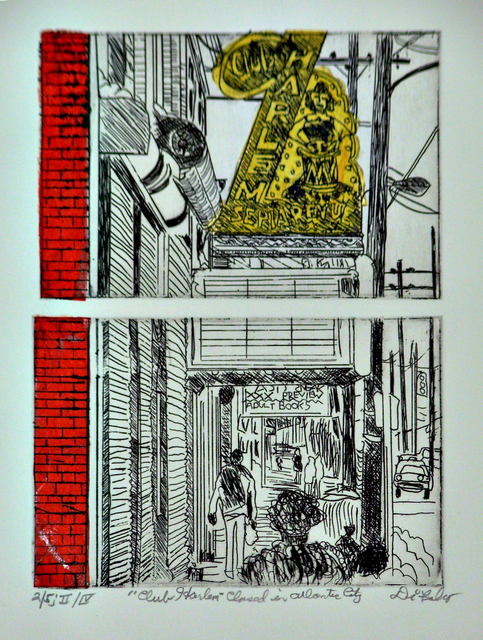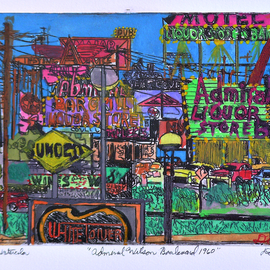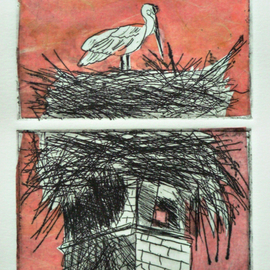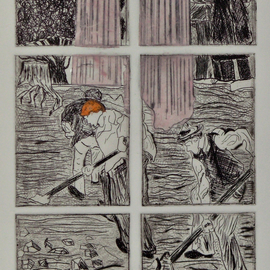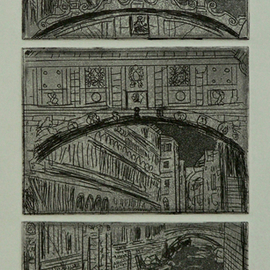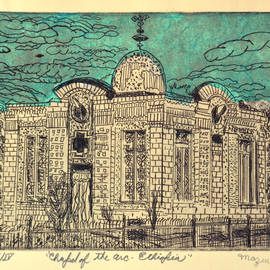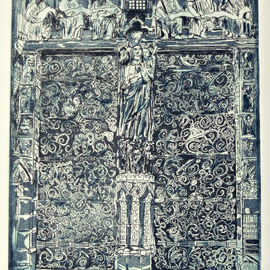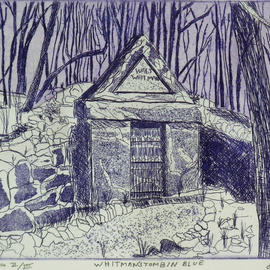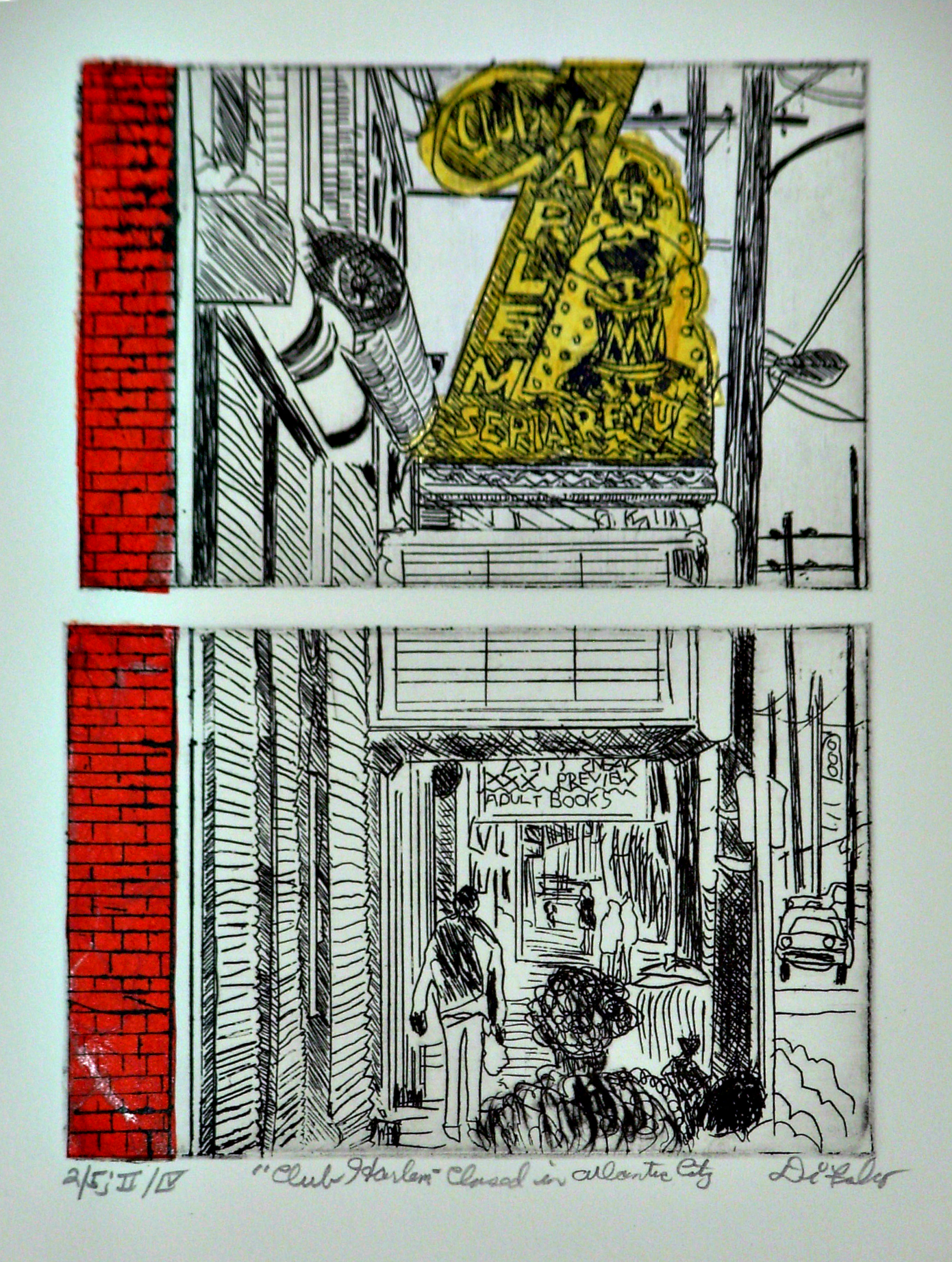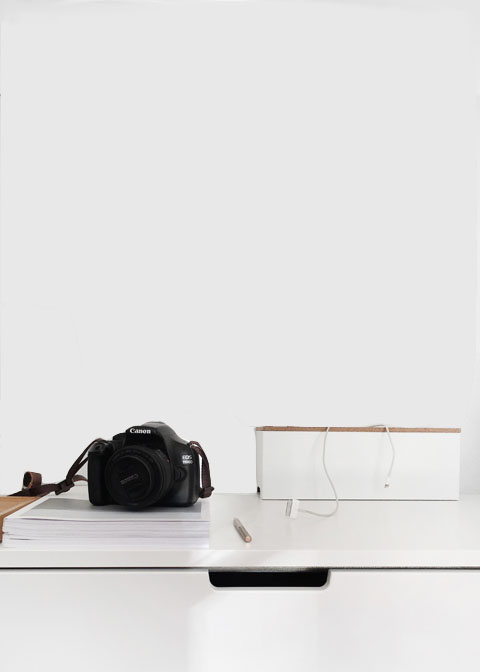The Closed Club Harlem Printmaking By Jerry Di Falco
Artwork For Sale ❯ Printmaking ❯ Jerry Di Falco ❯ Inspirational ❯ The Closed Club Harlem
Artist:
Jerry Di Falco
Title:
The Closed Club Harlem
Price:
Year:
2020
Medium:
Size - (USA):
12 W x 16 H x 1 D (inches)
Size - (metric):
30.5 W x 40.6 H x 2.5 D (centimeters)
Theme:
Edition:
Original
Artwork ID:
633255
PDF Copy:
Artwork Description:
This SECOND Edition etching, which contains five original prints in FOUR EDITIONS, is executed oil base dense black ink -- Charbonnel brand -- and is printed on RivesBFK white paper, both manufactured in France. This is print number 2 of 5, and I used a Charles Brand industrial floor press that was manufactured in New York City. The image size is 6.5 inches wide by 8.5 inches high, 16.51cm x 21.59cm, and was produced by placing two individual zinc etching plates, each measuring 4 inches high by 6 inches high, or 10.16cm x 25.40cm, on the press bed to create one printed image. The plates required five individual etching baths in Nitric acid. All etchings were hand printed by the artist at The Center for Works on Paper in Philadelphia, Pennsylvania, US. Using methylcellulose-treated mulberry bark paper directly onto the inked and wiped plate before running it through the press created the red and yellow areas. This mulberry bark paper from Thailand was also infused with Japanese kozo threads. An explanation of this process follows. I employed the studio etching techniques of intaglio, Chine colle, and drypoint. The original print ships to the collector in a frame with both an archival mat and craft paper backing glued in place. The frame measures between 11 to 12 inches wide by 14 to 15 inches high, or 27.94 to 30.48cm by 35.56 to 38.10cm . This etching is from Di Falco’s new series entitled, Slot Machine Gun Assassination, which focuses upon the death of art in Atlantic City, New Jersey, an east-coast seaside resort as a result of legalized casino gambling in 1978. As a child of eight, the artist and his mother traveled to Atlantic City to hear his musician father, Happy Di Falco, play at the Club Harlem, frequently with a group called The Ink Spots. The artist shot the photo on which this etching is based in1981, about twenty years after visiting the vibrant Club Harlem. It shows a very different Atlantic City. HISTORY Between the years of 1945 and 1979, Atlantic City began to attract many artists from New York City, Philadelphia, Baltimore, and Washington DC as year round residents. The worlds of Jazz, Dance, Theater, and Nightclubs had already established solid roots here, with establishments like the elegant Club Harlem, whose stars included such luminaries as Louis Armstrong, Ella Fitzgerald, and Red Foxx. Moreover, a growing visual art scene was quickly taking root after 1960. In addition, a vibrant trans, gay and lesbian presence exploded around this time, and Atlantic City gained a reputation as New Jersey’s Greenwich Village. Sadly, this changed after Casino Gambling arrived, and mob connected corporations purchased blocks of prime oceanfront property on the famous boardwalk. These buildings were demolished and transformed into a stretch of smoke filled casinos minus the lackluster architecture or allure of Las Vegas. This three to five block area behind the newly constructed casinos -- the same area where dozens of gay bars, jazz clubs, cinemas, theaters, and restaurants flourished -- were razed to make space for indoor parking lots, which never materialized. At present, the casinos provide parking for thousands of employees outside of the city limits and transport them to work on shuttle buses.“Atlantic City”, the artist explains, “now reminds me of a twilight zone of bulldozed nothingness. Moreover, those vacant acres that separate the wealthy casino strip from one of New Jersey’s poorest ghettos. . . reminds me of downtown Beirut in 1980. . . or the heavily guarded borders between Palestine and Israel. The Atlantic City Boardwalk of live entertainment, ballroom dancing, cultural and ethnic festivals, art fairs, and amusement piers was transformed into a comatose, crime-infested causeway of wooden planks. Gone from the boardwalk are the aromas of roasted peanuts. . . Gone is the performance art pier with Zambora the Ape Woman. . . Gone is the Million Dollar’s Pier’s Italian American museum. . . Gone is the Steele Pier with its cinemas, concerts, ballroom, and Diving Bell. Gone and replaced with Overpriced buffetsfur saloons and art galleries that carry acceptable art“Abbra Cadabra and. . . gone is the fun. . . while stockholders monitor all activity with hidden guns It ain’t Monaco.” The Chine Colle Process, which translates from French as Chinese pasting, is a manual etching method that adds color areas to an etching. Methylcellulose powder is reconstituted by mixing it with spring water and then applying the clear viscous substance to hand dyed mulberrybark paper from Thailand, Brand is Unryu. In Japan, Unryu translates as CLOUD DRAGON paper because it has long swirling threads of kozo fibers integrated in it, thereby giving the texture and visual effect of clouds. NOTE -- Kozo fibers come the branches of the kozo bush, specifically the innermost of three layers of bark, which are removed, cooked, and beaten before the sheets are formed. Kozo is harvested annually. The treated Thai paper is then allowed to dry overnight and I cut it to fit the plate areas where I want color to exist in the print. These stenciled mulberry-bark papers are first dampened misted with water and placed upon the already inked and wiped etching plate. The printing process continues and results in a multi colored etching.
Artwork Keywords:
Atlantic City, Jazz, Urban Removal, Organized Crime, History, Original Printmaking
